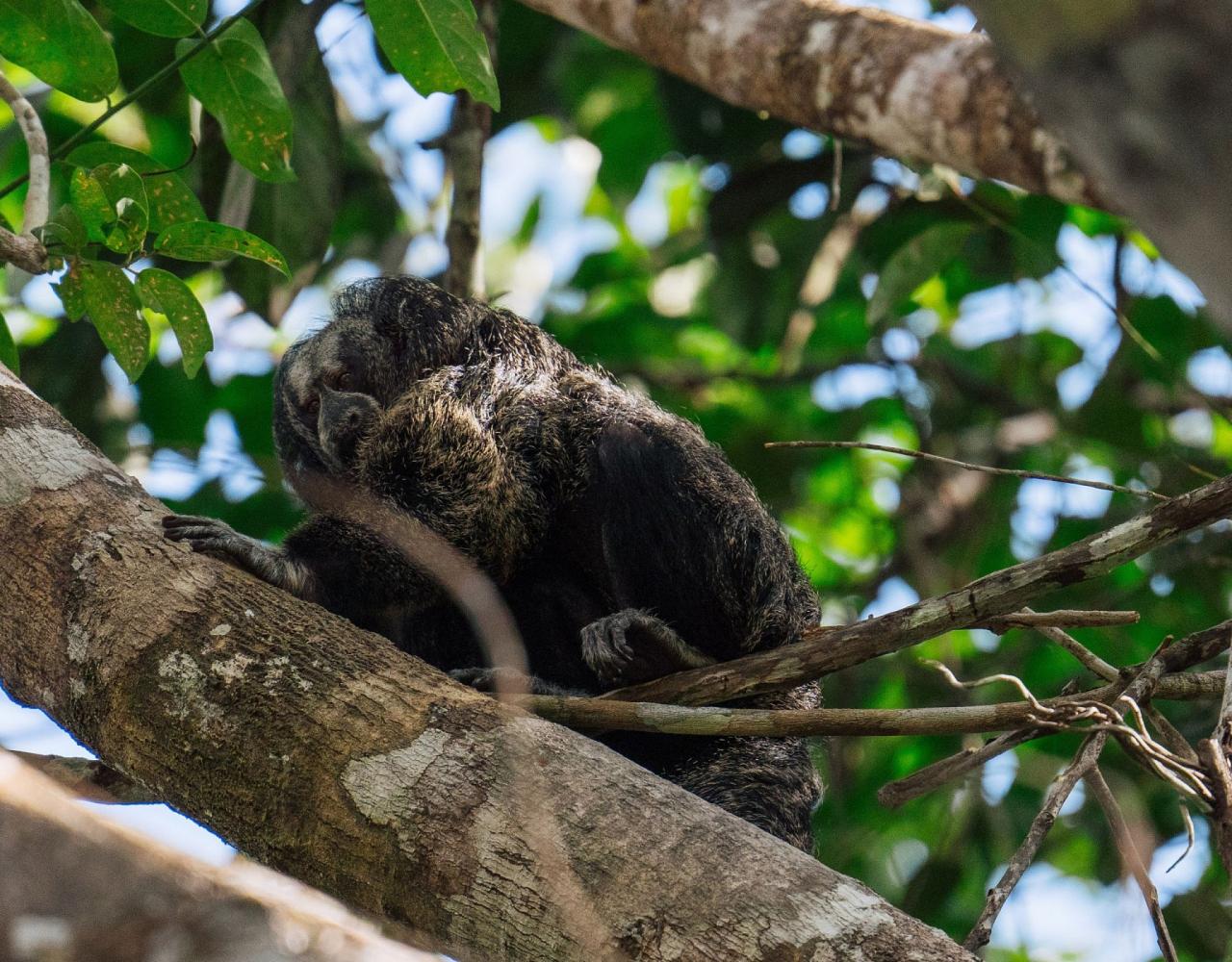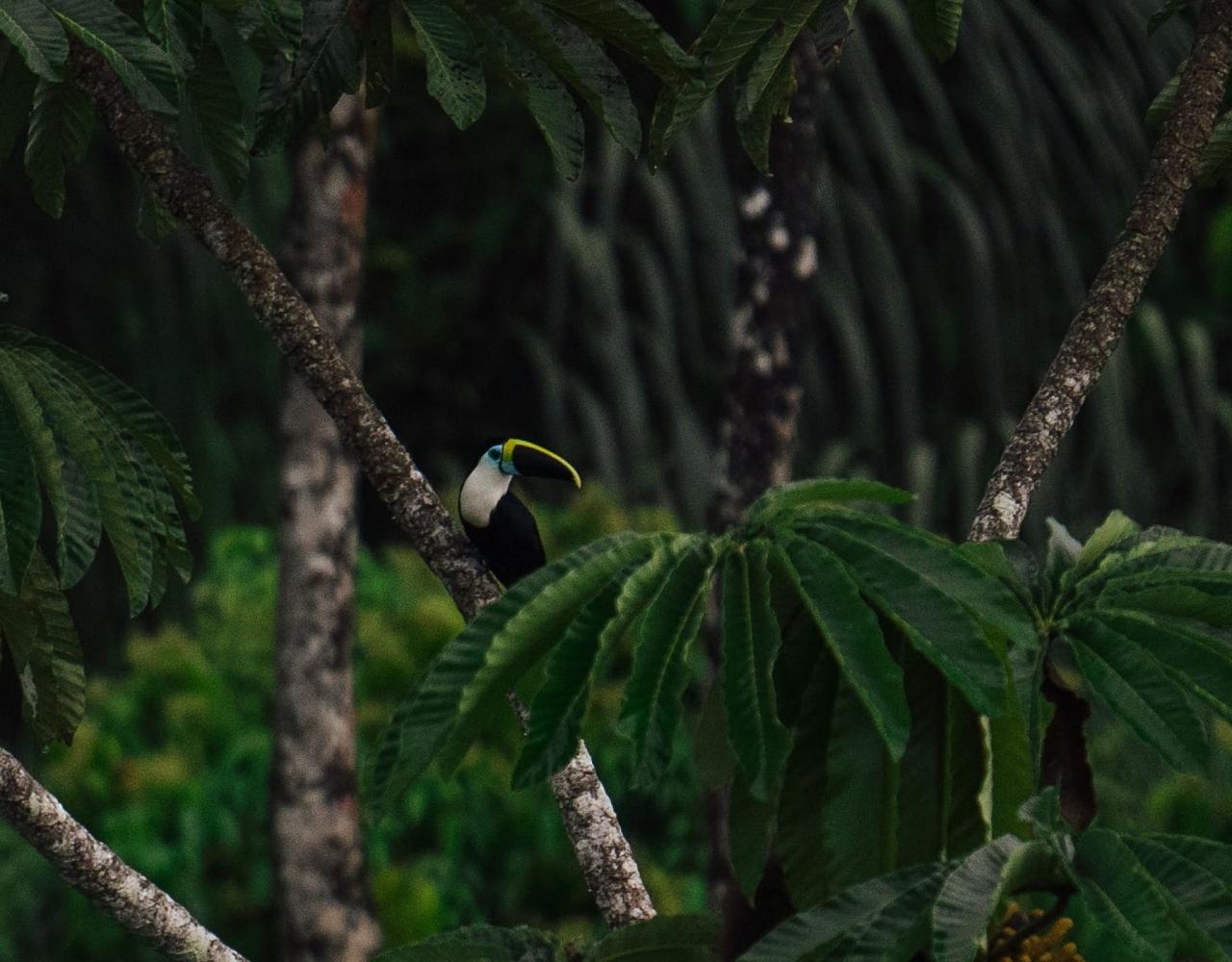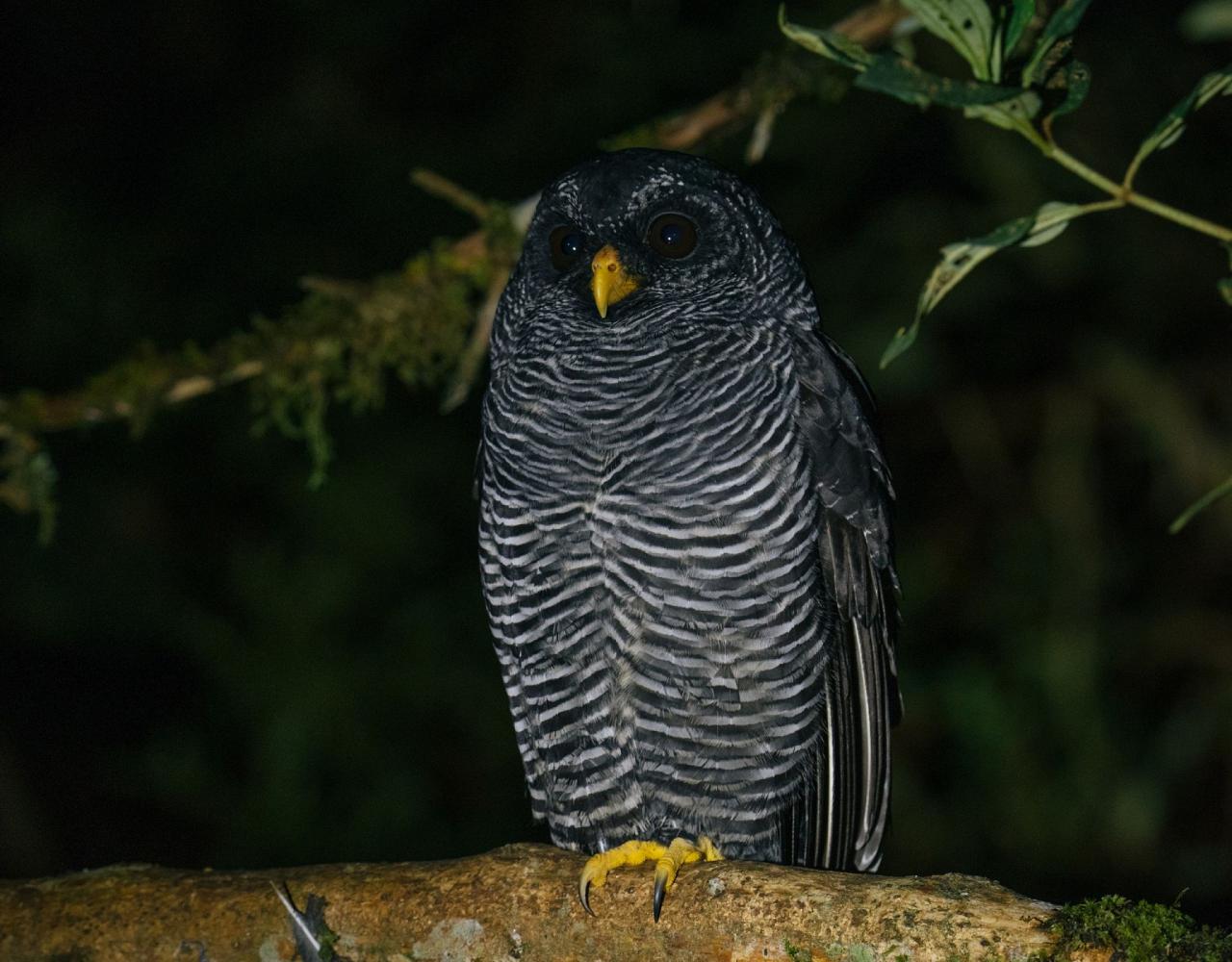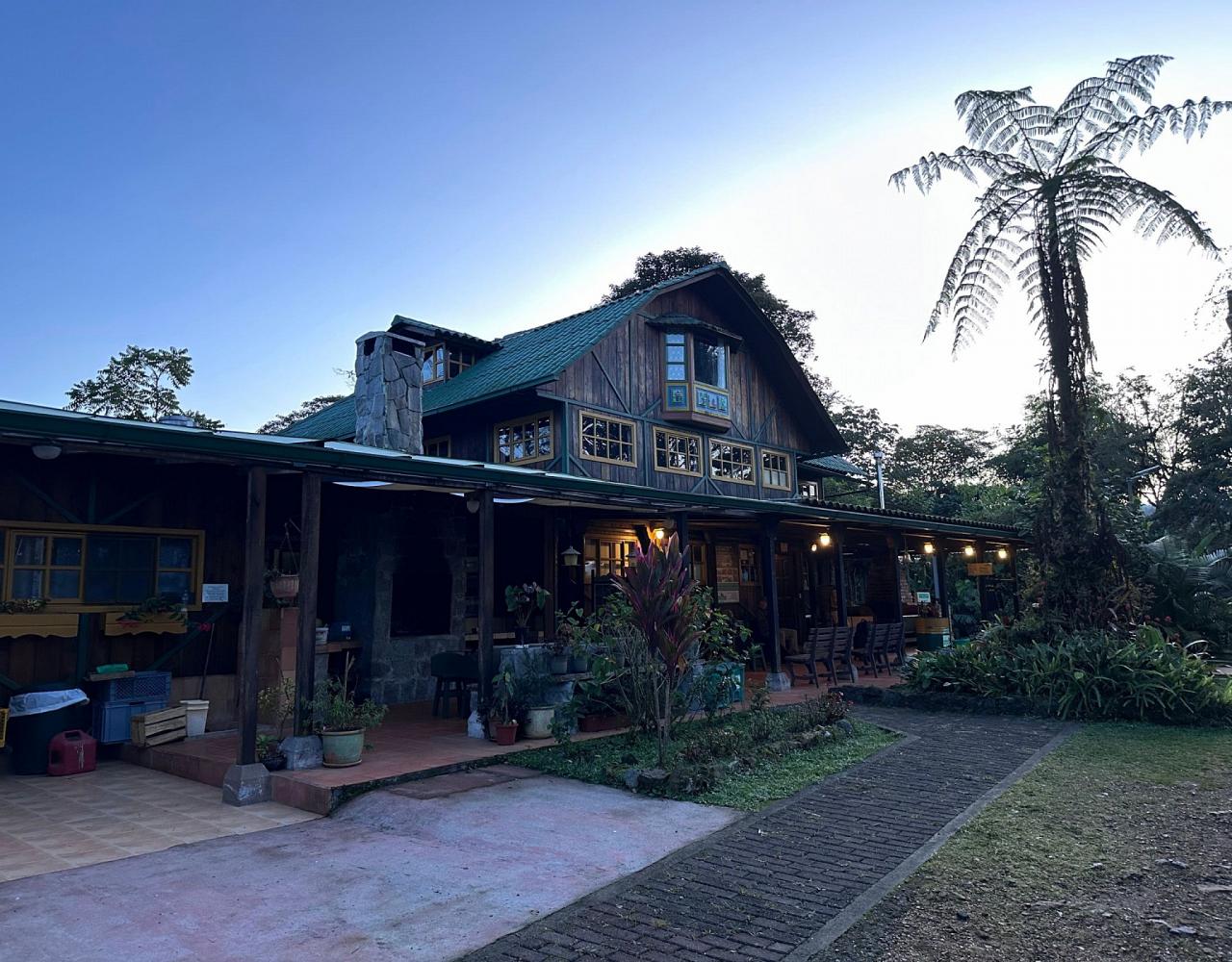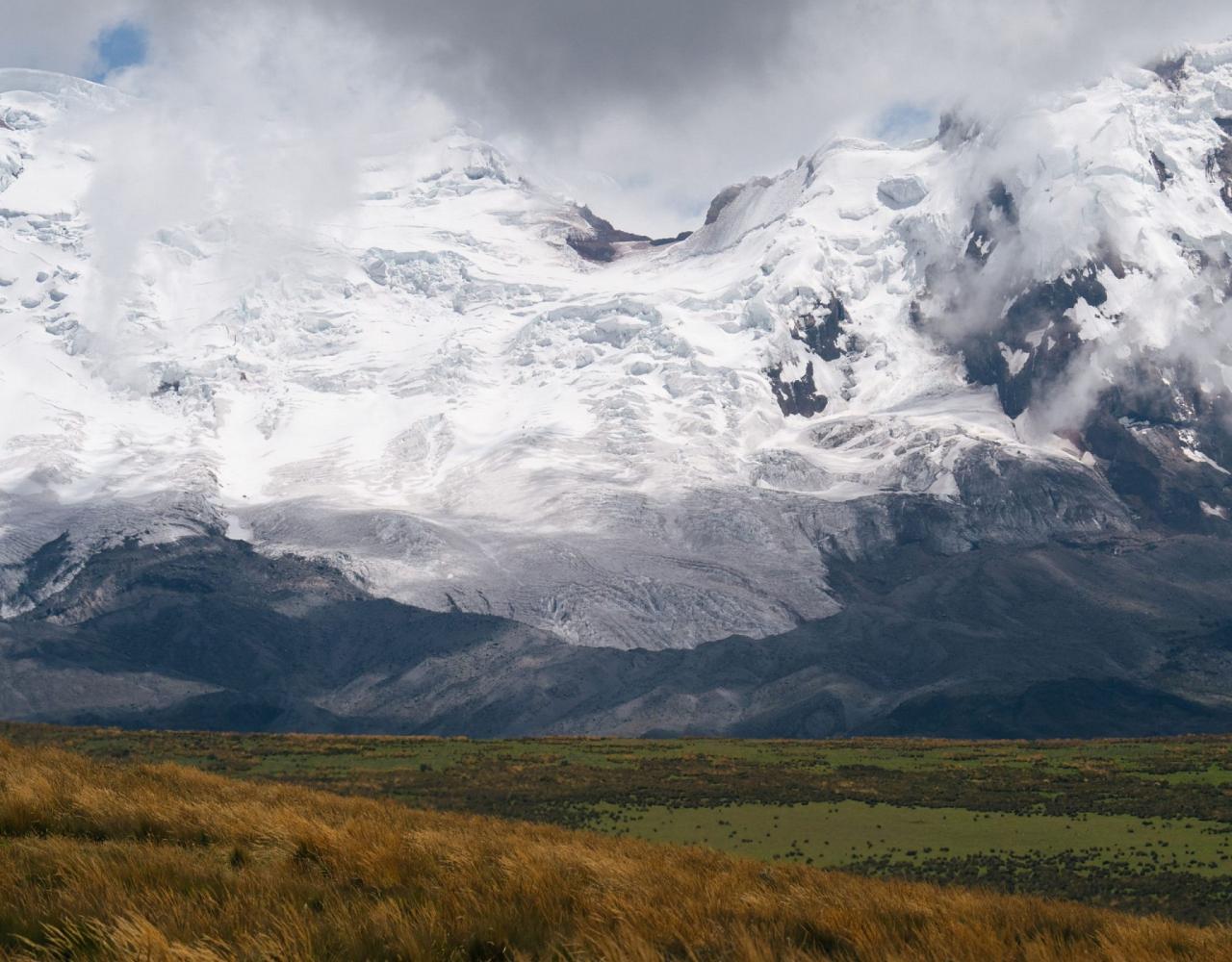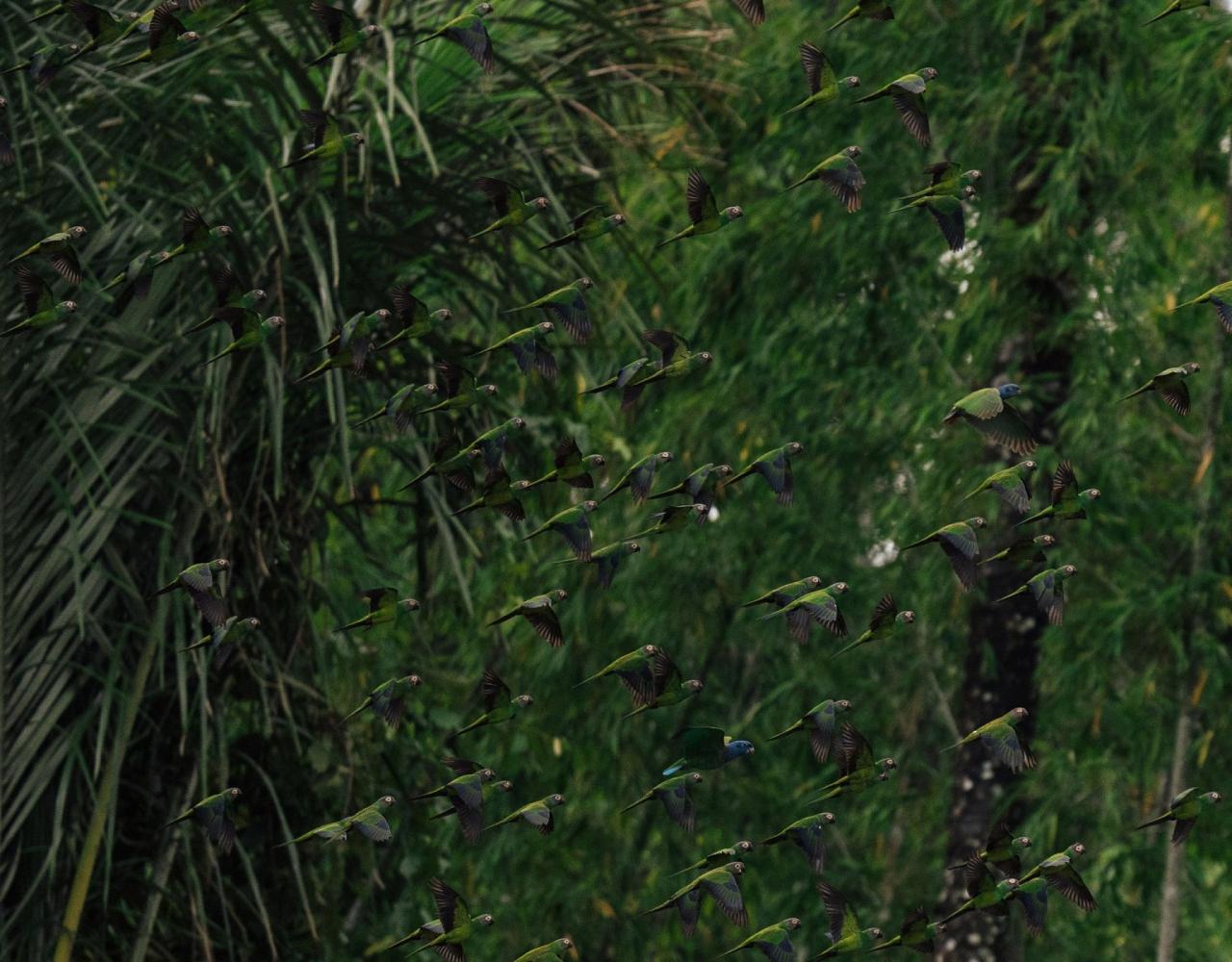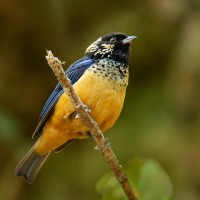- Overview
- Full Itinerary
- Photo Gallery
- Costing
- Travel Details
- Trip Reports
- Guide
- Map
- Know Before You Go
- Other Trips You May Like
As one of the birdiest countries in the world, Ecuador has long been a hotspot for birding and nature tours. Now Ecuador’s mammals are becoming more visible as more eco-lodges spring up in the country’s biodiverse Amazon region. The recent discovery of a new racoon, the Olinguito, helped inspire this dedicated bird and mammal-watching tour, bringing together the best of the Amazon and Andes regions.
Get started at beautiful Sachatamia Lodge, where birding is impressive, and we search for the Olinguito in the subtropical forests of northwestern Ecuador before heading on a boat ride down the Napo River for four nights at the Napo Wildlife Center, encircled by pristine upper Amazon rainforest within Yasuní National Park. Here we look for Golden-mantled Tamarin, White-fronted Capuchin Monkey and White-bellied Spider Monkey, along with sloths, marmosets, Red Brocket Deer, and the elusive Monk Saki. Then we’re off to the eastern cordillera, traveling down the eastern Andean slope, we next lodge at Cabañas San Isidro in the picturesque Quijos Valley where we look for Spectacled Bear, Mountain Tapir, and other mammals in the high grasslands, followed by a relaxing end to the trip at Termas Papallacta where we explore native forest and bogs at the Cayambe Coca Ecological Reserve around Papallacta, again searching for Spectacled Bear and Mountain Tapir.




- “A trip of a lifetime! Being able to see the diversity in birds, animals and plants of several different life zones made for exceptional experiences. The selection of lodges was amazing. They were all fantastic.”— Lois Ports, 2023 Traveler
- “It was an epic adventure, exploring three of Ecuador's most precious habitats: the cloud forest, the high Andes, and the Amazon Basin.” — David Welch, 2023 Traveler
- “All the Birds! OMG, how can you not love seeing 30 species of hummingbirds plus so many other amazing birds. I loved that this tour - the guides and guests - geek out over non feathered creatures. Monkeys, sea otters, tayras, kinkajou, and the olinguito were all fun to see.” — Susan Meriwether, 2023 Traveler
Tour Highlights
- Seek Spectacled Bear, Mountain Tapir, Giant Anteater, and Tayra in the heart of the Ecuadorian Andes
- Search for the recently discovered Olinguito in forests of north-west Ecuador
- Arrive by motorized canoe at Napo Wildlife Center and enjoy a four-night stay
- Watch for stunning Giant Otter and many monkeys plus sloths
- Take on excursions to look for Giant Otters, Hoatzin and Agami Heron
- Enjoy watching a wealth of birds attracted to gardens at Cabañas San Isidro
- Look for iconic mammals in the Cayambe Coca Ecological Reserve
- Relax in our last lodge’s thermal pools




Trip Itinerary
Itineraries are guidelines; variations in itinerary may occur to account for weather, road conditions, closures, etc. and to maximize your experience.
Sat., Nov. 2 : Arrivals in Quito
Many flights from the USA arrive in Quito in the evening. We enjoy our time in Quito, one of South America’s most attractive colonial capitals. Nestled at the foot of the volcano Pichincha, Quito enjoys bright sunshine during this time of the year and, on a clear day, stunning views of towering Andean peaks. Quito means ‘Eternal Spring’ in the ancient language of Quechua, and we enjoy the glorious climate. Quito is the second highest capital in the world at 9,000 feet above sea level. Settle in and relax; dinner tonight is at your leisure but you are welcome to get together with the rest of the group for a casual evening meal.
Accommodations at the San Jose de Puembo Hotel
Sun., Nov. 3 : Zuraloma Reserve | Sachatamia
Driving up out of Quito we pass over the western ridge of the Andes, dropping down onto the Pacific slope. This forested valley has earned its impressive reputation for the quality and number of birds seen along its length, including Toucan Barbet, Plate-billed Mountain-toucan, Masked Trogon, White-capped Dipper, Cinnamon Flycatcher, and many tanagers and hummingbird species.
We make our way northwest to the Zuraloma Reserve nestled on the Pichincha Volcano. The lush cloud forest here, punctuated by snow-capped peaks is an incredibly beautiful and complex ecosystem where myriad tanagers and hummingbirds include Tyrian Metaltail, Mountain Velvetbreast, impressive Sword-billed, and impossibly cute pufflegs. We hope to see the elusive Chestnut-naped Antpitta here, too.
We expect to arrive at our lodge in the late afternoon, in time to enjoy the hummingbird feeders before the sun sets. Our lodge offers great bird and butterfly watching, as well as wonderful meals, and a cozy fireplace to gather around in the evenings. It is nestled in the valley of the Rio Mindo, a remarkable locale, home to over 360 species of birds. The ridges, slopes, and steep ravines to the north, west, and east of the village are cloaked in pre-montane cloud forest with a dense understory that includes Guadua bamboo.
Settle in and watch for Violet-tailed Sylph, Empress Brilliant, Tawny-bellied Hermit, Green-fronted Lancebill, Purple-throated Woodstar, White-bellied Woodstar, Green-crowned Woodnymph, Brown and White-collared Inca, Western Emerald, and more at feeders surrounding the dining area.
A hint to be most comfortable here: Bring easy-to-slip-off shoes, as you go in and out of the lodge in search of birds. Ecuadorian custom is to remove shoes to protect their beautiful wooden floors!
Accommodations at Sachatamia (B,L,D)
Mon., Nov. 4 & Tues., Nov. 5 : Two Full Days Looking for Mammals
We spend the next two days looking for mammals (the birds sure are distracting though!). We spend time looking for coati, Mountain Agouti, and our key species of the area, the recently discovered Olinguito, a small, carnivorous red-furred mammal whose nocturnal wanderings in dense, cloudforest fog helped them evade detection by the scientific community until recently. Or rather, the Olinguito had been detected and even collected, but nearly two dozen preserved skins and skulls were misidentified as close relatives in US museum collections! There’s even evidence that one individual lived in several American zoos during the 1960s frustrating zookeepers by refusing to breed with the Olingos, which it was mistaken for. New species of insects and amphibians are discovered fairly regularly, but a new mammal species is rare, particularly with carnivorous mammals. The Colombian Weasel, found in 1978, is the most recent find in the Western Hemisphere. With the help of our expert local guides, who keep a watchful eye on its whereabouts, we have great chances to see it in spotlighting sessions after dark.
An optional field trip to Angel Paz’s Refugio Paz de las Aves, offers great birds, among them many antpittas, including Yellow-breasted and Giant, and also spectacular Andean Cock-of-the-Rock. This excursion features a short, but steep, hike. If you are able we would highly recommend you join us!
Accommodations at Sachatamia (B,L,D)
Wed., Nov. 6 : Bellavista Cloud Forest Reserve | Quito
Today we visit Bellavista Cloud Forest Reserve, a private 1,000-acre nature reserve that encompasses a mix of primary and secondary forest. The botanical wonder here is something to behold! One of the top birding locations in Ecuador, the reserve is known for its diverse hummingbird species (at feeders for close-ups), as well as a colorful array of toucans and tanagers. At 5,000 – 7,000 feet we encounter spectacular cloud forest on the steep slopes above us. Here we may find a number of bird species with limited range, including the Tanager Finch.
The forest and gardens are draped with orchids and bromeliads, and butterflies abound. Some of the most beautiful birds of the forest include the Plate-billed Mountain Toucan, Toucan Barbet, Golden Tanager, and Flame-faced Tanager. Lunch and the choice of hiking or birding fill our afternoon at Bellavista.
Accommodations in Quito (B,L,D)
Thurs., Nov. 7 : Napo Wildlife Center
We leave early today for a flight to Coca, headed down to the base of the Andes and eastwards across the vast Amazonian floodplain to Coca, a port town where it is warmer and more humid. We head to the Napo River, Ecuador’s main Amazon tributary, where a covered motorized canoe takes us on our 2½ hour, 50-mile voyage downstream to the Napo Wildlife Center.
Roughly a third of a mile wide, the river’s waters are sediment-rich and huge sandy beaches are exposed during the dry season. We search there for various herons, kingfishers, and raptors as we move downstream. We switch to smaller, dugout canoes at the NWC Reserve, relying on the paddling of our local guides in the black water creek to the lake and lodge. The prohibition against motors in the lake and creek benefits wildlife. We may see many things during our journey of one to three hours depending on how many times we stop. Giant Otter, potoos, kingfishers, Hoatzin, jacamars, hawks, and monkeys are all possibilities. We enjoy a picnic lunch in our canoes, arriving at the lodge by late afternoon.
Our backyard for the next four nights, Yasuní National Park, is a UNESCO Biosphere Reserve and the largest, best conserved, and most diverse tract of Amazon rainforest in Ecuador. Built on the shore of tranquil Añagu Lake, Napo Wildlife Center is a comfortable rainforest lodge inside a 82 square-mile private nature reserve, an ancestral territory of the Añangu community, which co-owns the center. An abundance of wildlife viewing keeps us hopping near the lodge, including amazing parrot and mammal clay-licks, a resident family of Giant Otter, stunning endemic monkeys, and a huge list of over 565 bird species, among them many hummingbirds like stunning Sparkling Violetear. The lodge also boasts two solid towers that bring us into the rainforest canopy at dawn to witness flocks of colorful tanagers and other species, which are difficult to see from the rainforest floor.
Accommodations at Napo Wildlife Center (B,L,D)
Fri., Nov. 8 – Sun., Nov. 10 : Napo Wildlife Center
We wake up to the sounds of rainforest dawn chorus, with three full days in front of us to explore this fabulous habitat. We connect today with a native Añangu guide, also an official Yasuní Park Ranger, who shares information with us on the rainforest’s medicinal and otherwise useful plants. With an eye on the weather, we maximize field time at the highest peaks of activity, with early morning excursions. Breaking for lunch and a siesta, we head out again in the afternoon and evening. Exciting night-time excursions are optional but recommended, because that is when the forest really comes alive, with a concert of natural sounds flooding the air.
Early morning parrot clay-licks are among the highlights of a stay at NWC, which hosts two of Ecuador’s most accessible spots, featuring sturdy and comfortable hides. Expect great photo and video opportunities of many species, including: Mealy, Blue-headed, Yellow-crowned, Orange-winged and Orange-cheeked Parrots, Cobalt-winged, Dusky-headed, Maroon-tailed and White-eyed Parakeets, along with occasional rarities like Scarlet-shouldered Parrotlet and Scarlet Macaw. In dry and sunny weather, some 800 individual birds of different species may be spotted, and even on rainy days, dozens of birds may still congregate.
There is a 60-foot high observation tower that sticks out from the surrounding foliage for great views of Mealy Amazon and Blue-headed Parrot, Cobalt-winged Parakeet (and also the lake and lodge). Active resident birds can be seen nesting and feeding from the tower, and a family group of beautiful and rare Golden-mantled Tamarin often forages close by.
The main 125-foot canopy tower is impressive. We walk about 35 minutes from the lodge to reach it, built adjacent to a giant Kapok tree, where an ample platform provides space for more than 15 guests and their cameras, scopes, and tripods. Ascending at dawn, we find the birding outstanding and mammal enthusiasts may see troops of Red Howler Monkey, White-fronted Capuchin, Monk Saki, or Black Spider Monkey in the surrounding forest. On a clear day, views stretch to the high Andes and Volcanoes Sumaco, Antisana, and Cayambe. Imagine standing in humid lowland forest and looking out to snowcapped Andean peaks! Active mixed flocks forage diligently in the vicinity of ‘our’ tree and with nearby fruiting trees to entice, we may see more than 100 species in a single morning. The possibilities are mind-boggling: toucans, macaws, colorful tanagers, raptors, flycatchers, and many more.
NWC has a large lake with two streams and a quiet guided paddle down one of them is an ideal way to locate troops of even more monkeys, including Squirrel Monkey, Saddle-backed Tamarin, and White-fronted Capuchin. Less likely but possible are Monk Saki, Spider, Woolly, and Golden-mantled Tamarin Monkeys. Napo is home to 11 species of monkey, and you can hope to see the majority of them during our time here. Ecuador’s four species of native caiman are all found at NWC as well. The largest, Black Caiman, lives in the main lake and groups of them are often seen during night-time canoe rides, when flashlights reflect in their eyes. The creeks are home to other species, including a resident family of Giant Otter, a magnificent Anaconda in an area of flooded forest, White-lipped Peccary (wild pig), and serene Three-toed Sloth.
Trails branching out from the lodge lead us through a variety of forest ecosystems. Look closely and you see bizarre and well camouflaged insects, along with monkeys, lizards, tortoises, frogs, army and leafcutter ants, in addition to a dazzling display of birds. Bird diversity is highest here in the forest, where many of the antbirds and ovenbirds are cryptically colored/patterned and reclusive. Our expert local guide recognizes them by their calls and helps us to find them. We are always happy to see an ant swarm, and its attendant specialist antbirds, a mind-boggling experience!
We would be very lucky to see Jaguar, Puma, Brazilian Tapir, Giant Anteater, and Giant Armadillo, though have all been recorded in this area. For the best chances for the most species, make sure to join the night walks!
Accommodations at Napo Wildlife Center (B,L,D)
Mon., Nov. 11 : Cabañas San Isidro
We bird our way back via boat and road transfers to the Quijos Valley, one of the westernmost headwaters of the Amazon basin at Cabañas San Isidro, at an elevation of 6,800 feet. It was founded more than 40 years ago by the Bustamante family of Quito, during a government campaign to convert unclaimed lands of eastern Ecuador into productive farms. Despite pressure to clear the land for farming, Simón Bustamante left most of his 1,300 hectare property untouched in part to help protect the unique flora and fauna, and the area has slowly matured into an area of ecolodges and nature-focused accommodations. It is happily surrounded by some of the largest and most accessible tracts of primary subtropical forest in Ecuador. Our host, Carmen, is Simón’s daughter, who has managed the lodge for the last 20 years. We settle into superb lodgings here for the next two nights.
Accommodations at Cabanas San Isidro (B,L,D)
Tues., Nov. 12 : Full Day at Cabañas San Isidro
We are surrounded by some of the largest and most accessible tracts of primary subtropical forest in Ecuador in San Isidro. Red-tailed Squirrel and Black Agouti are both easily observed here, while Spectacled Bear, Mountain Tapir, Giant Anteater, and Tayra are frequently photographed and occasionally seen, along with other mammals. A wealth of birds flocks to its gardens, and should mammal-watching prove quiet, are a pleasant diversion. From our cabin doorsteps, we may see White-capped Parrot, Powerful Woodpecker, Rufous-crowned Tody-Flycatcher, Pale-edged Flycatcher, Smoky Bush-Tyrant, Green-and-black Fruiteater, Inca Jay, Black-billed Peppershrike, Andean Solitaire, and Saffron-crowned Tanager. Nearby forests, accessible by trail or road, offer mixed understory and canopy flocks that seemingly drip from the foliage. Fruit-eaters of all sizes raid trees and bushes and more furtive birds may be found in the shade of low vegetation. We hope to see Sickle-winged Guan, Crested and Golden-headed Quetzals, Masked Trogon, and Highland Motmot here. A dazzling array of hummingbirds have their own dedicated garden here, and are also spotted from the lodge’s front porch. Some 18 of the known 30 hummer species of the area are either resident or seasonal visitors to the feeders: Sparkling Violetear, Speckled Hummingbird, Fawn-breasted Brilliant, Bronzy and Collared Incas, Buff-tailed (the rare eastern flavescens race) and Chestnut-breasted Coronets, Tyrian Metaltail, Long-tailed Sylph, and Gorgeted Woodstar are year-round residents. Species found more seasonally and in smaller numbers include Rufous-vented Whitetip, Violet-fronted Brilliant, White-tailed Hillstar, Mountain Velvetbreast, Wedge-billed Hummingbird and White-bellied Woodstar.
The hummingbird garden is a great place to relax after a hike or during a rainy spell. The majority of the forests here are idyllic: large hardwood trees draped with lush mosses supporting orchid and bromeliad species in impressive numbers. Indeed, our mid-elevation habitat here is a paradise for orchids and other flamboyant epiphytes and photographers will no doubt be pleased! Our action-packed day is rewarded with a comfortable and superbly located lodge to come home to.
Accommodations at Cabanas San Isidro (B,L,D)
Wed., Nov. 13 & Thurs., Nov. 14 : Papallacta | Cayambe Coca Ecological Reserve for Spectacled Bear
San Isidro’s hummingbird feeders enliven the morning once again over breakfast. We bird our way northwest with stops to watch for any birds we may have missed over the past few days. We next head up the ridge of the eastern cordillera toward Papallacta. As we gain in altitude and near the Andean continental divide, we may see species such as Black-chested Buzzard-eagle, Viridian Metaltail, and Buff-breasted Mountain-tanager.
We check in this afternoon for pleasant nights at Termas de Papallacta hotel and watch hummingbird feeders for species such as Tourmaline Sunangel, Sword-billed Hummingbird, and White-bellied Woodstar.
Our hotel is nested into the mountains within view of Antisana’s snowcapped peak and the lodge grounds are lushly landscaped. Five thermal pools (and one polar pool for the bravest among us) beckon for some quiet downtime and relaxation. Go crazy and enjoy birding right from the pool.
We have a full day to explore Cayambe Coca Ecological Reserve, a windswept landscape of high grassland and bog known as paramo, with a few patches of native forest clinging to its slopes. The habitat around Papallacta could fairly be described as desolate, making us grateful for our cozy lodge! Spectacled Bear and Mountain Tapir shelter in these small forest patches, but may be seen at dawn and dusk venturing out to forage and feed. The area’s forest patches are the focal points for our patient scanning and, with expert local help, we have a good chance of seeing Spectacled Bear and a reasonable chance of Mountain Tapir. Warm and waterproof clothing is the key to enjoying this ‘hunt’, along with hardy patience! A hot soak in the thermal pools under the stars is a fine reward for our efforts, along with fresh cooked local trout and a chilled Chilean wine.
While scanning for bear or tapir is our priority here, birds are also present and fascinating. As we scan for these special mammals, we may see Andean Condor, Carunculated Caracara, Andean Gull, Black-tailed Trainbearer, Scrub and Blue-and-yellow Tanagers, and Southern Yellow-grosbeak. On clear days, the scenery is spectacular offering superb views of the snow-capped Volcán Antisana, a particular delight to the landscape photographers among us. Birders know this area as the Papallacta Pass and with decent weather, we may see Rufous-bellied Seedsnipe, Ecuadorian Hillstar, Tawny Antpitta, Many-striped Canastero, White-chinned Thistletail, Red-rumped Bush-tyrant, Black-billed Shrike-tyrant and Brown-backed Chat-tyrant, among other paramo species. We travel to humid temperate forest a short distance down the valley, a habitat characterized by stunted trees, a different climate, and another set of birds and plants.
Accommodations at Termas de Papallacta (B,L,D)
Fri., Nov. 15 : Departures
Since most flights leave Quito for the US this evening, we enjoy a leisurely morning at our lodge, getting in a few more birds for the road, and then we pack up and head back to Quito for flights home. Please make flights out after 5:00 PM. (B,L)
Cost of the Journey
Cost of the tour, from Quito, Ecuador, is per person based on occupancy: $6390 DBL / $7040 SGL. Tour price includes: 13 nights’ accommodations, airport transfers, and professional guide services. It includes land transportation within Ecuador, park and reserve entrance fees, pre-departure information and services, miscellaneous program expenses, accommodation and meals at all lodges, private transport, and private bilingual bird/naturalist guide. Tour price does NOT include your international flights to Quito or your internal flights in Ecuador (estimated at $120), though we do book the internal flights for you. The tour cost does not include items of a personal nature such as beverages from the bar, porterage, laundry, phone calls, or gift items. We also recommend a gratuity for maid service, and for our local drivers and guides, which is left to your discretion.
Travel Details
Please plan to make air travel plans only after the minimum group size has been met. We will send you a confirmation email as soon as the trip has been confirmed.
Arrival and Departure Airport: Mariscal Sucre International Airport (UIO), Quito Ecuador
Arrival Details: Plan to arrive November 2, at your leisure
Departure Details: Plan flights to depart November 15, after 5:00 PM
Travel Tip: If you would like to arrive early, you can book an early night at our first night tour hotel, the San Jose de Puembo Hotel. It’s a lovely hacienda-style hotel that has a restaurant, bar, and beautiful gardens throughout the property that make it excellent for birding. You can book this online and give us the confirmation number with the goal being you don’t have to switch rooms.
Entry Requirements: See "Essential Information" section under the "Know Before You Go" tab.
Browse below for trip reports and species lists from past versions of this and other tours from this destination.
Ecuador
- November 2017
- November 2018
- November 2019
- November 2022
- January 2023
- November 2023 (Birds & Mammals)
- December 2023 (Christmas Tour)
- March 2024
- November 2024 (Birds & Mammals)
-
Wes Larson

Wes Larson is a wildlife biologist who specializes in some of the most beloved and threatened species around the world. His primary research has been on polar, black, grizzly and sloth bears, but he has been lucky enough to work on conservation projects with myriad other species, including Golden Eagle, African Wild Dog, Green Sea Turtle, Elephant Seal, Spotted Eagle Ray, Burrowing and Flammulated Owl, American Kestrel, Temminck’s Ground Pangolin, and American Alligator. Wes also has a passion for wildlife conservation education, and hosted the Mission Wild series for CNN’s Great Big Story, and regularly shares his travels and field work with his large social media following. He credits his love for wild things and bears to an upbringing in Montana, where the forests and mountains are a last refuge for his favorite species, the Grizzly Bear of the Rocky Mountains. Wes’s passion for all things wild is infectious and the only thing he loves more than seeing wildlife in its natural habitat is sharing those experiences with other people.
Other trips with Wes Larson
-
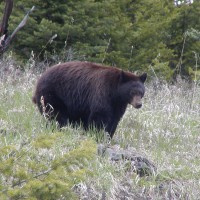 Yellowstone: Birds, Bears & WildlifeMay 29 - June 4, 2025
Yellowstone: Birds, Bears & WildlifeMay 29 - June 4, 2025 -
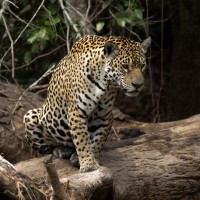 Brazil’s Pantanal: Jaguars! And More… FULL - Check out Jewels of Brazil’s Atlantic Forest in September!September 5 - 15, 2025, w/Amazonia extension
Brazil’s Pantanal: Jaguars! And More… FULL - Check out Jewels of Brazil’s Atlantic Forest in September!September 5 - 15, 2025, w/Amazonia extension -
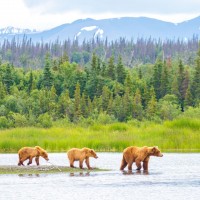 Aleutian Islands Adventure with Dutch Harbor & Kodiak IslandJune 26 - July 6, 2026
Aleutian Islands Adventure with Dutch Harbor & Kodiak IslandJune 26 - July 6, 2026
-
Essential Information +
Pace & Protocols +
Packing List +
Suggested Reading List +
Useful Links +
Photo credits: Banners: Masked Trogon (Wes Larson), Napo Wildlife Cente (Jessie Hallstrom), Scarlet Macaws (Wes Larson), Parrot Flock (Wes Larson), Crimson-rumped Toucanet (Wes Larson), Tawny Antpitta (Wes Larson), Plate-billed Mountain Toucan (Wes Larson), Giant River Otter (Wes Larson), Cloud Forest Scenic (Wes Larson) Thumbnails: Andean Cock-of-the-Rock (Wes Larson), Monk Saki (Wes Larson), Hooded Mountain Tanager (Wes Larson), Glass Frog (Wes Larson), Capped Heron (Wes Larson), Sword-billed Hummingbird, White-faced Capuchin (Wes Larson), Turquoise Jay (Wes Larson)












